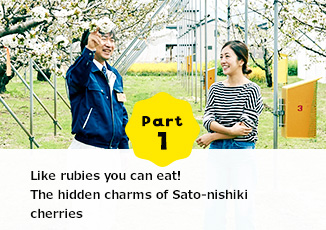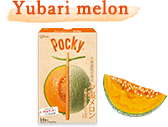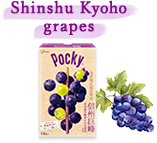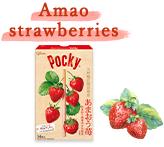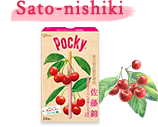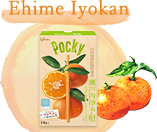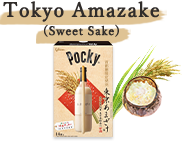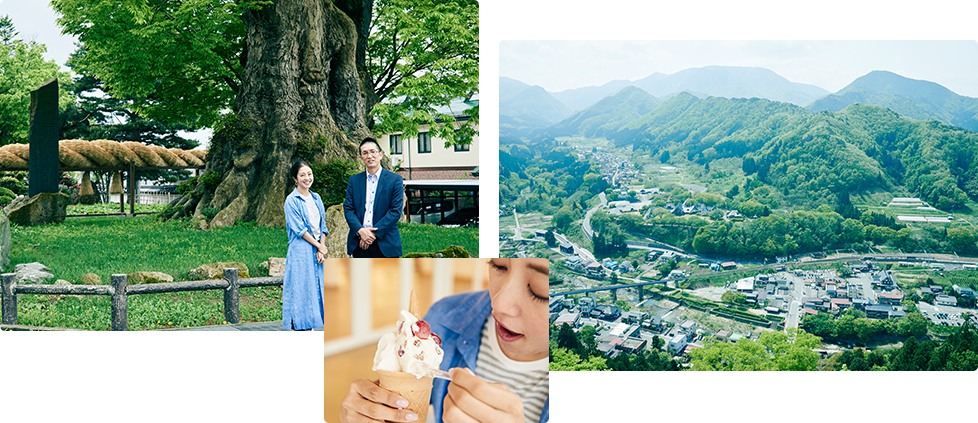
The Sato Nishiki Cherry is the queen of cherries,
packed chock-full of a sweet and sour flavors.
The cherry was first devised in 1928. It is one of the signature varieties of cherry today, having been around for ninety years.
Seeking to learn more about these tiny and beautiful jewels, the product of farmers’ passion,
I visited Yamagata Prefecture, which accounts for 90% of production of Sato Nishiki Cherry.
The cherries take 2-3 times longer than normal cherries to harvest and prepare for shipment!
I first visited the horticultural testing facilities of the Yamagata Integrated Agricultural Research Center, which develops the latest strains of cherries and researches new agricultural technologies.
According to Mr. Nagaoka, head of the fruits division, “Cherries, among them the Sato Nishiki Cherry, are considered luxury foodstuffs in Japan. This is because of the time and effort required to properly harvest them. Of total cultivation time, harvesting and packing amounts for 60% of all processes, which is two to threes times longer than other fruits.
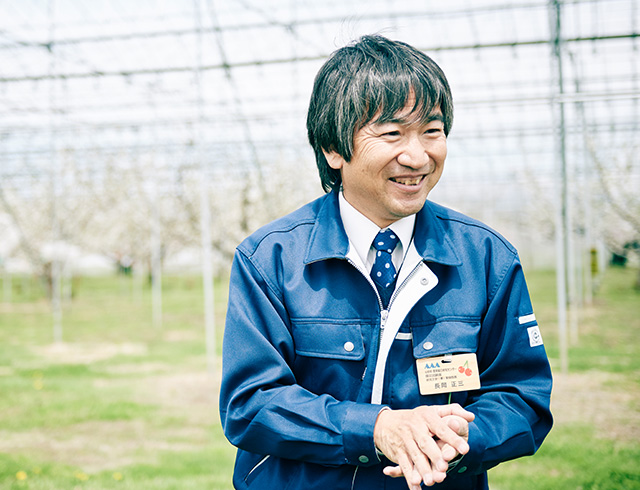
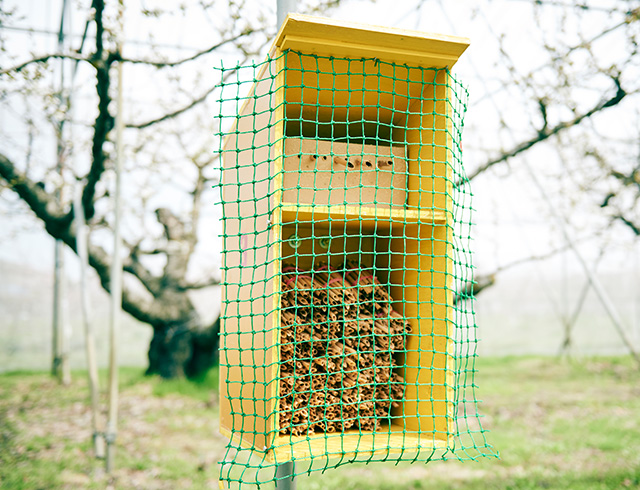
Pollination is essential to delicious Sato Nishiki Cherry.
Bees are responsible for this role.
Osmia cornifrons bees congregate around the Sato Nishiki Cherry trees planted on the test field. Cherries will only sprout if pollinated with pollen from other species, so the bees play a crucial role as partners in conveying that pollen. Pollination can also be achieved by human hands.
Developing delicious Sato Nishiki Cherry through long years of research.
Mr. Nagaoka joined the horticultural testing center thirty years ago. At the time, Sato Nishiki Cherry had a Brix level of 12-13 points. Today, it is over 20! “Making improvements to cultivation methods is essential to making the cherries tastier. It’s the result of many long years of effort,†he says.
Mr. Ito, head of the horticultural testing site, adds, “We are now trying to make a strain with super large fruit. If we could, it might yield even new appeal to cherries.†This gave a hint of what is perhaps to come for Sato Nishiki Cherry.
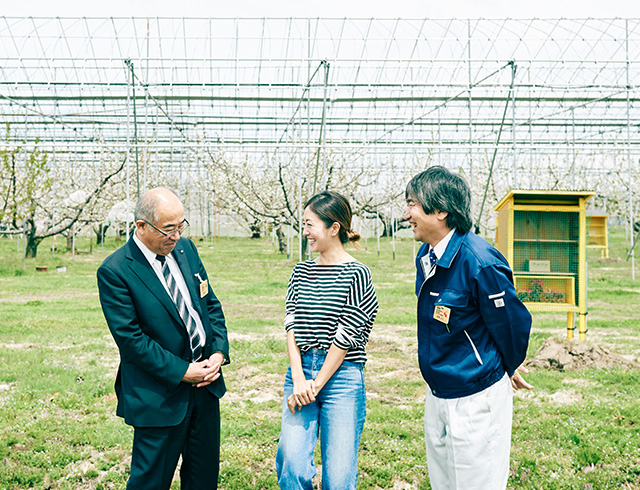
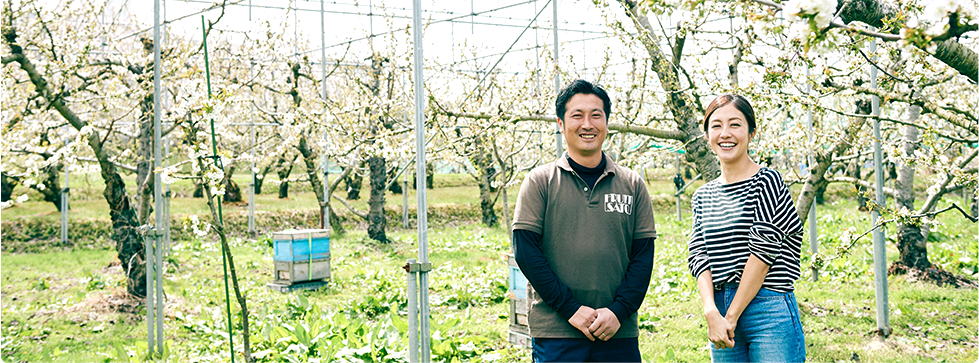
I next visited Michiyuki Sato, who runs Fruits Sato, a cherry farm. (By the way, there are apparently lots of Satos in Yamagata!)
It was right when the Sato Nishiki Cherry were blooming. We looked at the bright white petals of the cherry trees while he conveyed the farmers’ enthusiasm for the fruit.
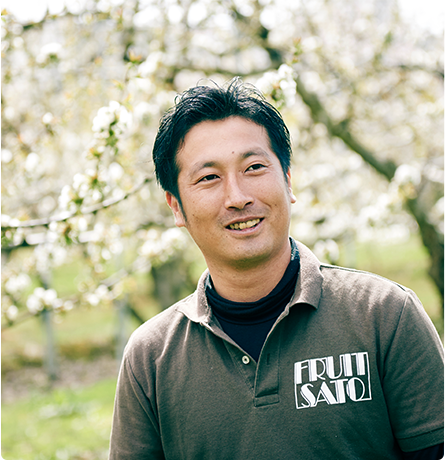
The more effort you spend, the sweeter they become.
No effort is wasted on creating bright red jewels.
Mr. Sato said, “It’s about two months now between the trees blooming and the harvest beginning. Every year, I always worry about whether they will properly bear fruit.â€
The same, apparently, applies while waiting for the flowers. If the temperature drops too low in spring evenings, they light bonfires to warm up the cherry trees.
“Cherries are quite sensitive. So we expend a lot of effort each year to get them right. But the more time you spend, such as on fertilizer and pruning, the better the results are. So it’s definitely worth the effort.â€
Moved by the tears of customer, seeing the trees bear fruit
I asked Mr. Sato what the essence of Sato Nishiki Cherry is. He thought about it for a bit and said that he remembered one heartwarming episode.
“I had one customer who would order the cherries every year. One year, he said he wanted to pick them himself. So he came to the farm. But I found he wasn’t picking anything. He just looked at the fields. He was crying. He said he just wanted to see this vista for himself. It’s hard to convey in words, but that’s the kind of product we want to bring consumers -- something that is beautiful to behold, delicious to eat. Something where each and every cherry is a commitment to the consumer.â€


Seedlings
The seedlings are planted around December or March. It then takes 3-5 years for them to grow into fruit-bearing trees. That is quite a wait!
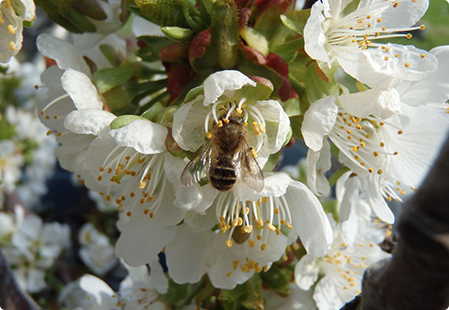
Pollination
Through the help of bees and human hands, the cherries are pollinated with pollen from other varietals.
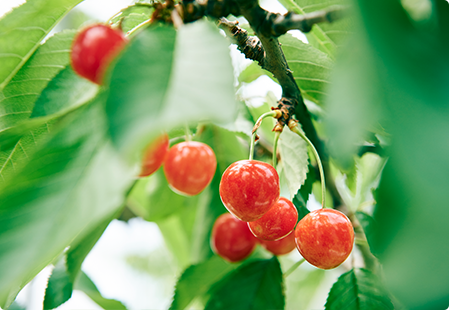
Harvest
Once the fruit grows a rich red, it is time to harvest. The greater the difference in temperature between the afternoon and evening, the bigger, redder, and sweeter they become.
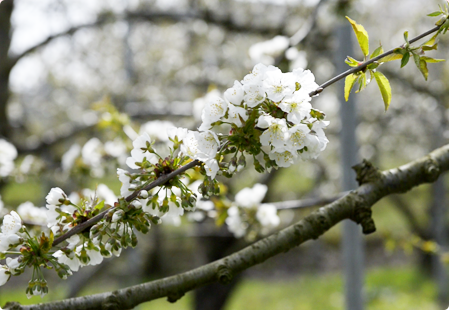
Flowering
Unlike pink cherry blossoms, the Sato Nishiki Cherry bears white flowers. One feature of cherries is that the leaves bud at the same time as the flowers.

Bearing fruit
After the petals fall, the pistils expand and the fruit grows.

After removing the petal, what remains at the center of the flower is the pistil. When pollen from another varietal touches the tip of the pistil, it pollinates, bearing fruit. The pollen cannot come from another Sato Nishiki Cherry, but has to be from another varietal, such as the Napoleon cherry.
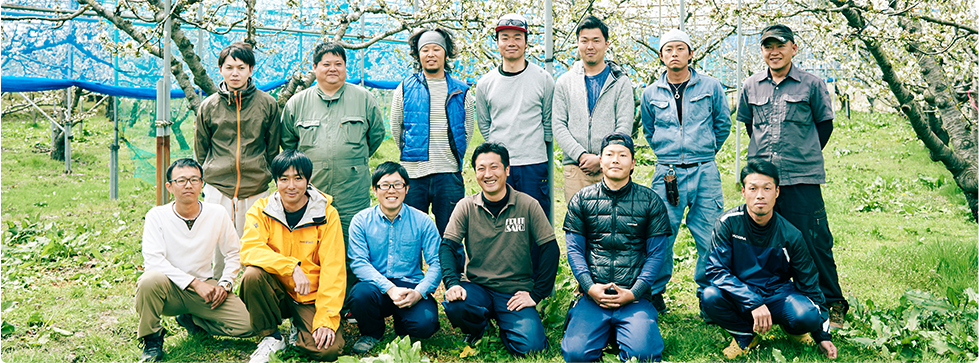
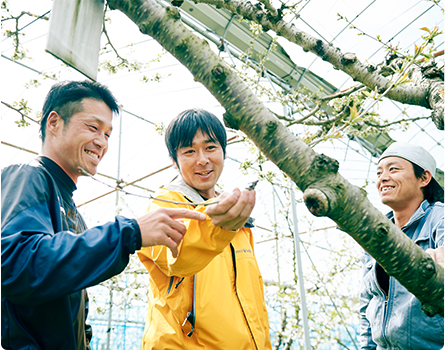
From information exchange to farm visits
A research group linking producers
Yamagata’s hunkiest guys are all here! Mr. Ito and the rest are all Sato Nishiki Cherry producers in their 20s-30s who live in the region. There are about forty of them, and they make up the Nishimurayama Young Cherry Producers’ Research Committee. In addition to hosting special events a few times a year, they also periodically get together to hold workshops on cultivation methods for Sato Nishiki Cherry, exchange information, and even visit other production regions, acting as key drivers of Yamagata’s Sato Nishiki Cherry.
A new local community driven by Sato Nishiki Cherry
Mr. Ito, chair of the committee, says, “We are seeing more and more young producers today, with the generation before us now being of advanced age, so it makes it difficult for us to approach those out of active service with our questions about production. We thus decided eight years ago to create this committee to field those sorts of questions and exchange of feedback. Through this group, we feel we have been able to better unify quality of Sato Nishiki Cherry across the board and stabilize yield, as well as help with community building.â€
Hearing their enthusiasm solidified all the more my desire to try their Sato Nishiki Cherries.


In the next installment, we visit the home of Sato Nishiki Cherries!

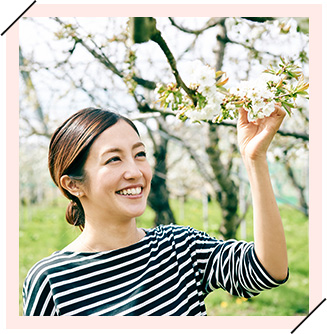
Sato Nishiki Cherries are a joy that comes but once a year! I made many new discoveries.
This report was done in late April. It was right in the midst of the cherry blossoms blooming!
They were just beautiful to look at!














